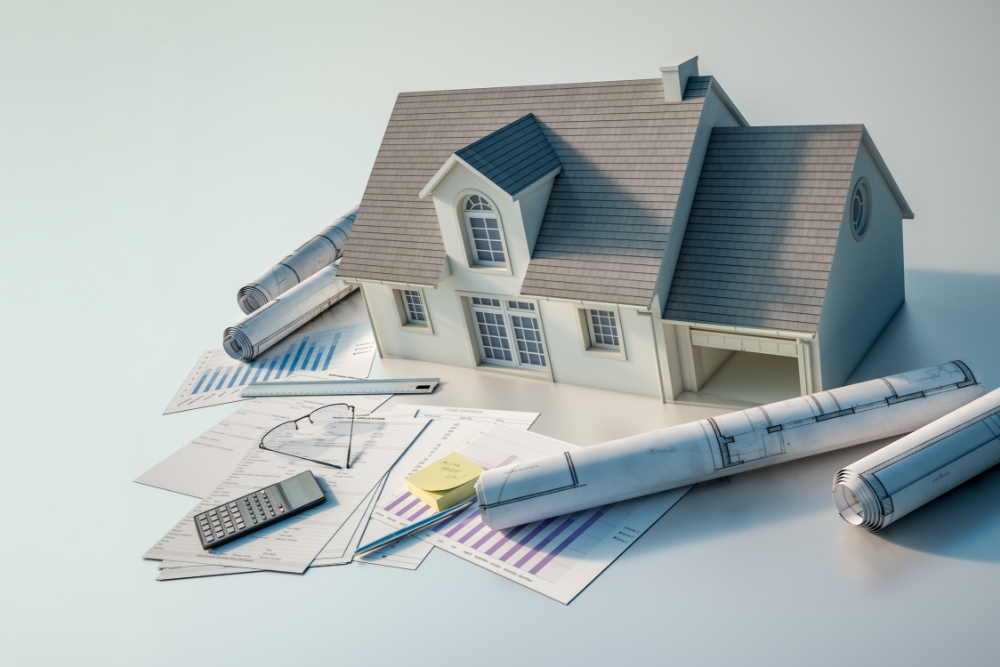HELOC for Home Improvement | How To Use a HELOC for Home Upgrades

Leveraging HELOC for Home Improvement Upgrades
Home equity loans offer a valuable resource for homeowners looking to improve their living spaces. Essentially, these loans allow homeowners to borrow against the equity they’ve built in their homes. This means that the more value you’ve added to your home, the more you can borrow for further improvements. Whether for a significant renovation or minor upgrades, a home equity loan for renovations can be an exceptional way to finance your project. FreeRateUpdate provides insights into how these loans work, making it easier for homeowners to understand and utilize them. Opting for a HELOC for home improvement can also efficiently manage your financing for these projects.
The Advantage of HELOC for Home Improvement Financing
A Home Equity Line of Credit (HELOC) is a highly flexible financial tool for homeowners. Unlike traditional loans, a HELOC operates more like a credit card, offering ongoing access to funds up to a specific limit. This flexibility makes it especially popular for ongoing home improvement projects. With a HELOC, you only pay interest on the amount you borrow, making it a cost-effective option for home renovation loans.
Homeowners appreciate the adaptability of a HELOC for home improvement, as it allows them to draw funds as needed for various stages of renovation. It’s an ideal solution for projects where costs vary or extend over time.
Exploring Home Improvement Financing Solutions
When planning home renovations, choosing the right financing can be as important as selecting the right contractor. Here’s a guide to help:
- Home Equity Loan: Best for large, one-time projects with predictable costs.
- HELOC: Ideal for ongoing projects with fluctuating expenses.
- Personal Loans: Good for smaller projects, often come with higher interest rates.
- Credit Cards: Useful for minimal improvements, but beware of high-interest rates.
- Government-Backed Loans: Such as FHA loans offer special terms for home improvement.
While home renovation loans come in different forms, home equity loans and HELOCs are often top choices due to lower interest rates and tax deductibility. Understanding your financial needs and project requirements is key to making the best decision. Be sure to research and compare home equity options thoroughly.

Diversifying Your Home Equity Borrowing Options
There are several other borrowing methods that homeowners can consider during home improvement financing. Cash-out mortgage refinancing stands out as a notable option, particularly for those looking to fund their renovations and improve their existing mortgage terms. This approach allows homeowners to refinance their mortgage for a higher amount than what they currently owe, and the difference is received in cash, which can be used for home improvements.
Another alternative is personal lines of credit. Especially suitable for those with solid credit scores, these lines of credit offer quick access to funds and can be a flexible solution for financing home projects. The convenience and speed of accessing funds make them an attractive option for urgent or unplanned renovations.
Furthermore, government-backed loans present a viable path, especially for those looking for potentially more favorable terms. Specific government programs offer loans designed for home improvements, providing homeowners with an alternative and sensible route to fund their renovation projects.
Understanding your specific financial goals and the requirements of your home improvement project is crucial in determining the most suitable borrowing method. The right choice can provide the necessary funds, peace of mind, and financial stability throughout the renovation.
Popular Home Improvement Projects Financed by Loans
Homeowners frequently use loans to transform their living spaces. Here are some typical projects:
- Kitchen Remodels: Upgrading appliances, counters, and cabinetry.
- Bathroom Renovations: Modernizing fixtures, tiling, and lighting.
- Adding Extra Rooms: Expanding living space or adding new rooms.
- Basement Finishing: Converting basements into functional living spaces.
- Outdoor Improvements: Landscaping, decks, and outdoor structures.
- Roof Replacement: Ensuring the integrity and safety of the home.
- Energy-Efficient Upgrades: Installing solar panels or energy-efficient windows.
These projects, often financed through home improvement loans or home renovation loans, not only enhance the comfort and functionality of a home but also potentially increase its resale value. Whether it’s a major remodel or a simple makeover, financing is key in turning these dreams into reality

Understanding Home Equity Use in Home Improvements: Frequently Asked Questions
Homeowners often have questions about leveraging home equity for renovations. It’s a fairly common practice, yet homeowners still have questions regarding their next moves. Here are some common inquiries that homeowners ask to avoid the confusion that can sometimes accompany this financial play:
What Is Home Equity, and How Can It Be Used for Home Improvements?
Home equity is the portion of your home’s value you own outright. It can be used through loans or credit lines to finance home renovations.
What Are the Benefits of Using Home Equity for Renovations?
Using home equity for renovations can often come with lower interest rates and potential tax benefits.
How Much Can I Borrow with a Home Equity Loan?
This depends on your home’s value and your remaining mortgage balance. Most lenders will limit you to a percentage of the equity. Certain programs will allow you to borrow as much equity you have in your home. You can calculate the amount of equity you have in your home by subtracting the current market value of your home from the amount you have left on your mortgage.
For example, if you bought a home for $500,000 ten years ago and paid a down payment of $100,000. At that time, the market value of your home was $500,000, and what you’ve already paid is your equity ($100,000).
Now let’s say today, the value of your home has risen to $700,000, and you only have $200,000 remaining on your mortgage. Your equity would be $500,000.
Are Home Equity Loans and HELOCs the Same?
No, they differ in structure. A home equity loan provides a lump sum, while a HELOC offers a revolving credit line.
Potential Pitfalls of Home Equity Loans for Renovations
Home equity loans are a popular choice for funding home renovations due to their accessibility and the potential for low-interest rates. However, like any financial decision, they come with their own set of challenges and risks that homeowners should be aware of. Understanding these drawbacks is crucial in making a well-informed decision about whether a home equity loan is right for your renovation needs. While beneficial in many scenarios, these loans can also bring several potential disadvantages that could impact your financial situation in both the short and long term. Here’s a few to keep in mind.
- Foreclosure Risk: Failing to repay can result in losing your home.
- Fluctuating Home Values: A drop in home value can lead to owing more than it’s worth.
- Accumulated Debt: Increases your total debt, affecting your financial health.
- Closing Costs and Fees: Can add to the overall cost of the loan.
- Tax Deductibility Changes: Interest tax deductions are subject to changing laws.
- Extended Repayment Terms: Extends your financial obligation over many years.
Considering these aspects is essential when looking into home improvement loans and renovation loans.
Embark on Your Home Improvement Journey with Confidence
Take the first confident step towards realizing your home improvement aspirations. A HELOC for home improvement offers the financial backbone to transform your home into the sanctuary you’ve always dreamed of. Whether it’s a modern kitchen, a luxurious bathroom, or an expanded living area, financing is critical to bringing these dreams to life. Don’t let financial constraints hold you back. Embrace the opportunity to enhance your home’s value and quality of life. Start exploring your options and shop for a home equity loan rate today.





